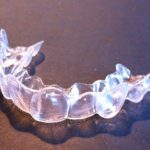
External root resorption (ERR) is a loss of mineralised tissues (cementum, dentine and bone) that can occur as an adverse effect of orthodontic treatment. Typically ERR linked to orthodontic treatment is minor to moderate and does not generally lead to significant clinical problems. Orthodontic treatment using clear aligners (CAT) is increasingly widely used and it has been suggested that ERR is less common than with traditional fixed appliance orthodontic treatment (FAT).
The aim of this review was to compare external root resorption in patients receiving clear aligners treatment with those being treated with fixed appliances.
Methods
Searches were conducted in the Medline/PubMed, Embase, China National Knowledge Infrastructure (CNKI), Europe PMC, the Cochrane Library, ScienceDirect and EBSCO host databases. Randomised controlled trials (RCTs), prospective and retrospective controlled or uncontrolled clinical trials were considered.
Two reviewers independently selected studies, abstracted data and assess risk of bias. The Cochrane Risk of Bias tool was used for RCT studies and the ROBINS-I tool for non-RCTs. External root resorption was assessed using tooth/root length and root-crown ratio. Standardised or weighted mean differences and 95% confidence intervals were calculated, and meta-analysis conducted.
Results
- 11 studies (6 before & after design, 4 cohorts and one case-control genetic study) were included.
- 5 studies were considered to have a serious risk of bias and 6 a moderate risk.
- All 11 studies investigated ERR in maxillary incisors with most also investigating the canines and mandibular incisors.
- 6 studies reported lower incidence and severity of ERR in patients receiving CAT, 2 reported the same incidence.
- Meta-analysis (3 studies,99 patients) found ERR in treatment with clear aligners was significantly lower than with fixed appliances, Standard mean difference (SMD) = -0.65 (95%CI; -0.74, -0.55).
Conclusions
The authors concluded: –
Based on current available evidence, this systematic review and meta-analysis demonstrates that CAT might not prevent ERR during orthodontic treatment, but both incidence and severity of ERR could be lower compared with results reported by studies in FAT. Intermittent force system and less jiggling movement, which require well-designed treatment plan by orthodontists and good cooperation by patients, might help to achieve it. However, the qualities of the studies included are relatively low. High-quality RCTs and considerations of more confounding factors are needed to conclude a more persuasive result.
Comments
A protocol for the review was published and a wide range of databases have been searched. However, none of the included studies were considered to be at low risk of bias with 5 out of 11 being at high risk. Only 3 of the low risk studies involving just 99 patients contributed to the meta-analysis so while ERR was significantly lower in patients having aligner treatment the findings should be viewed cautiously. The reviewers noted that ERR was reported in at least one tooth in patients undergoing CAT in all 11 studies they also highlight that different approaches were taken to measurements in the included studies and that in most of the included studies only non-extraction cases were included. So, while the review suggests that ERR may be lower in patients treated with CAT additional high-quality studies are needed to clarify the evidence.
Links
Primary Paper
Fang X, Qi R, Liu C. Root resorption in orthodontic treatment with clearaligners: A systematic review and meta-analysis. Orthod Craniofac Res. 2019 Jul 19. doi: 10.1111/ocr.12337. [Epub ahead of print] Review. PubMed PMID: 31323701.
Other references
Dental Elf – 28th Jan 2019
Dental Elf – Clear Aligner Blogs
Photo credits
“File:Invisalign aligner.jpg” by Smikey12 is licensed under CC BY-SA 3.0
